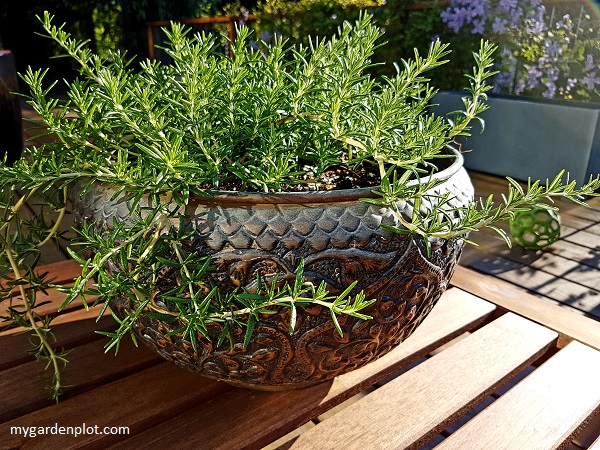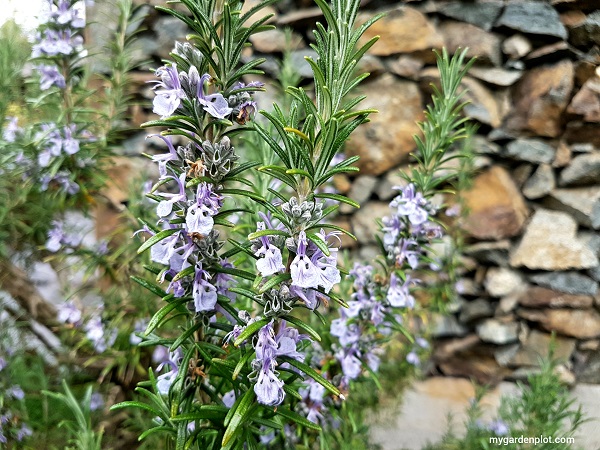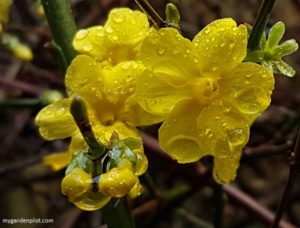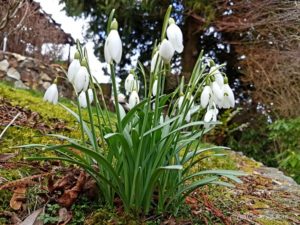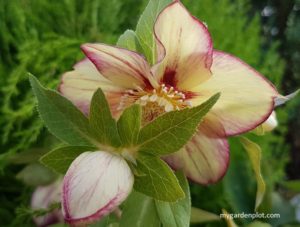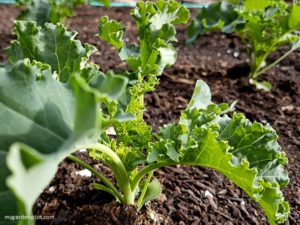Warm Season Herb: Rosemary (Rosmarinus officinalis)
One of the most aromatic Mediterranean herbs is the rosemary plant. This woody, evergreen perennial conjures images of classic meals from Europe and in particular, Italy and France. This is a must-have in your herb garden. Often associated as a traditional seasoning for meats, especially poultry and lamb, the rosemary herb can be used in various dishes with its earthy flavour. The stems can also be used as kabab skewers adding fragrance when BBQ grilling. The delightful rosemary flower is also edible. They are mild in flavour, and they dress up a salad wonderfully. Growing rosemary herbs in your garden has its rewards – they are hardy, attractive and low maintenance.
Growing Rosemary In The Garden
Aside from its culinary uses, it adds interesting texture with its needle-like foliage in your garden. We can easily say that rosemary is an attractive shrub in its own right as well as a nutritious and aromatic herb. Its blossoms are small, and edible, and open up at the end of winter and early spring. Note there are a variety of rosemary shrubs, sizes, and the blossoms can range from mauve and blue to pink and white. For hardier rosemary, select upright rather than trailing, creeping Rosemary. Also suitable for container gardening. Below we will go over where to plant and how to care for your rosemary herb plant.
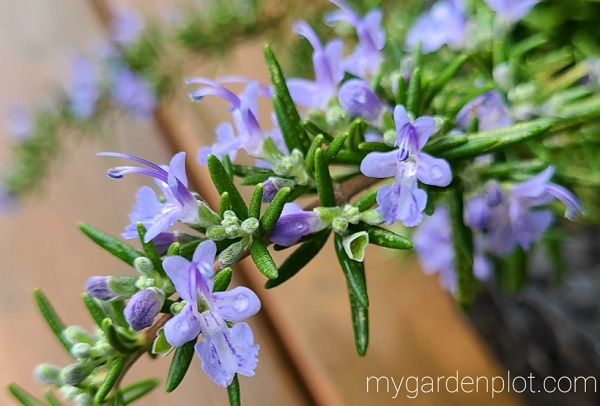
Rosemary At A Glance
Type: Evergreen perennial
Location: Full sun
Blooming season: Spring / Summer
Height: from 60 cm (2 ft) – 1.8 m (6 ft)
Coldest temperature hardiness: -12°C to 7°C (10°F to 20°F)
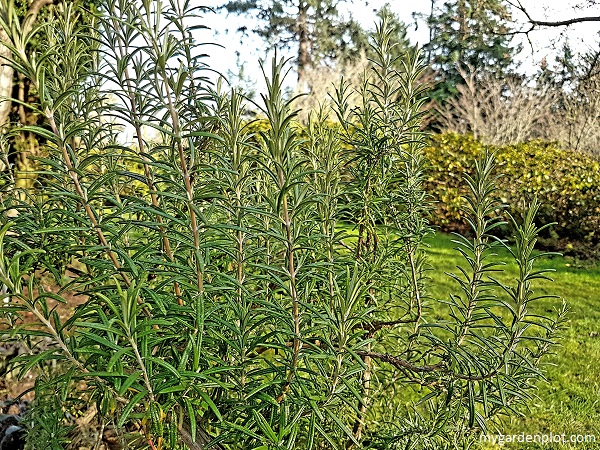
Where to Plant And How to Care For Rosemary
The rosemary shrub should be planted in spring in a location where it can get lots of sunshine. Your rosemary will not tolerate being consistently wet and must be planted in well-drained soil. It thrives in a sheltered location, such as next to the house where it is protected during the rainy season – as is typical in southern BC. In colder areas, the rosemary should be planted in a pot and brought indoors. For the most part, the hardy varieties can sustain cold temperatures down to -10°C.
Rosemary grows well with other savoury herbs, thyme and sage. Popular rosemary varieties can easily grow to 3-4 feet high and wide. In the right conditions, it can live a long time. They don’t like to be fussed over – the less you attend to it the better. Once established, it can tolerate dry conditions. It can, however, get a little shabby if not trimmed for cooking often, but with a bit of pruning in the springtime, it can be managed easily. For cooking, cut off a few inches of the stem as needed at any time of the year.
Thankfully the easy to look after rosemary shrub is deer resistant and generally pest and disease-free.
